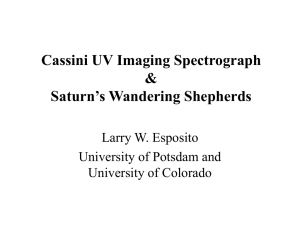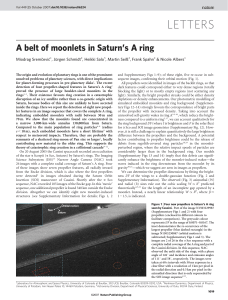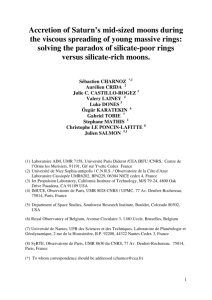Media Release
advertisement
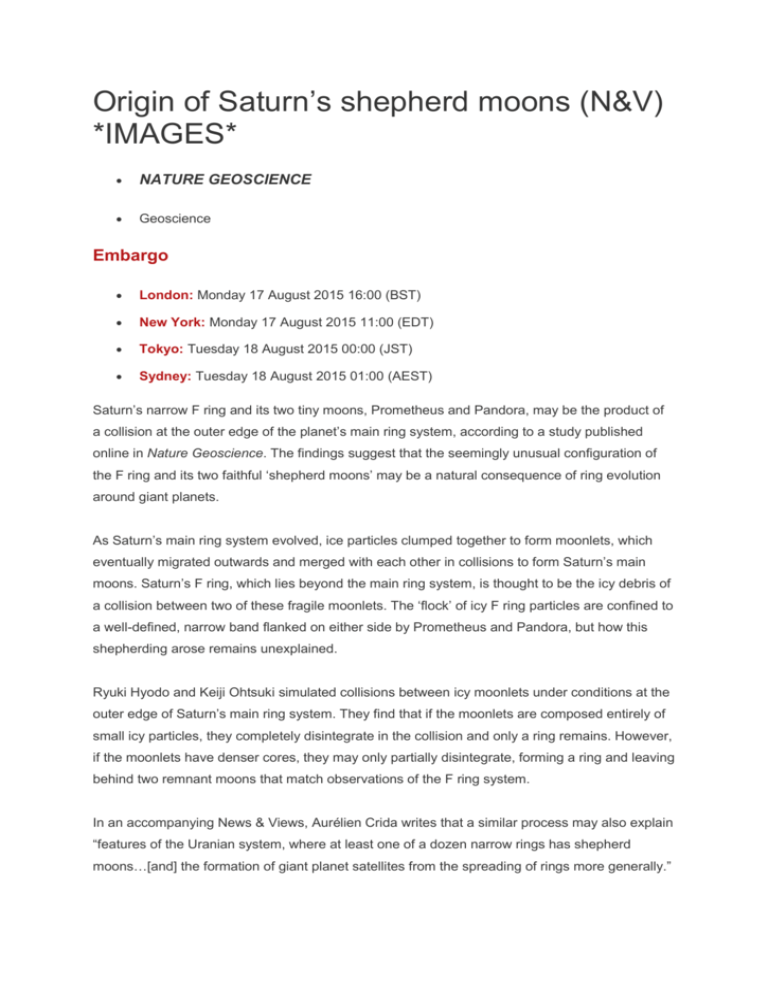
Origin of Saturn’s shepherd moons (N&V) *IMAGES* NATURE GEOSCIENCE Geoscience Embargo London: Monday 17 August 2015 16:00 (BST) New York: Monday 17 August 2015 11:00 (EDT) Tokyo: Tuesday 18 August 2015 00:00 (JST) Sydney: Tuesday 18 August 2015 01:00 (AEST) Saturn’s narrow F ring and its two tiny moons, Prometheus and Pandora, may be the product of a collision at the outer edge of the planet’s main ring system, according to a study published online in Nature Geoscience. The findings suggest that the seemingly unusual configuration of the F ring and its two faithful ‘shepherd moons’ may be a natural consequence of ring evolution around giant planets. As Saturn’s main ring system evolved, ice particles clumped together to form moonlets, which eventually migrated outwards and merged with each other in collisions to form Saturn’s main moons. Saturn’s F ring, which lies beyond the main ring system, is thought to be the icy debris of a collision between two of these fragile moonlets. The ‘flock’ of icy F ring particles are confined to a well-defined, narrow band flanked on either side by Prometheus and Pandora, but how this shepherding arose remains unexplained. Ryuki Hyodo and Keiji Ohtsuki simulated collisions between icy moonlets under conditions at the outer edge of Saturn’s main ring system. They find that if the moonlets are composed entirely of small icy particles, they completely disintegrate in the collision and only a ring remains. However, if the moonlets have denser cores, they may only partially disintegrate, forming a ring and leaving behind two remnant moons that match observations of the F ring system. In an accompanying News & Views, Aurélien Crida writes that a similar process may also explain “features of the Uranian system, where at least one of a dozen narrow rings has shepherd moons…[and] the formation of giant planet satellites from the spreading of rings more generally.” Article and author details 1. Saturn’s F ring and shepherd satellites a natural outcome of satellite system formation Corresponding Authors Keiji Ohtsuki Kobe University, Kobe, Japan Email: ohtsuki@tiger.kobe-u.ac.jp Ryuki Hyodo Kobe University, Kobe, Japan Email: ryukih@stu.kobe-u.ac.jp, Tel: +81 78 803 6476 News & Views Author Aurélien Crida, Nice Université Côte d’Azur - Observatoire de la Côte d’Azur - CNRS, Nice, France Email: crida@oca.eu DOI 10.1038/ngeo2508 Online paper* http://nature.com/articles/doi:10.1038/ngeo2508 * Please link to the article in online versions of your report (the URL will go live after the embargo ends). Geographical listings of authors France & Japan Image 1 Caption: Saturn and its main rings seen by Cassini spacecraft. Saturn's F ring is located just outside the main rings. Credit: NASA/JPL/Space Science Institute Image 2 Caption: Saturn's F ring and two shepherd satellites (Inner Prometheus and outer Pandora) seen by Cassini spacecraft. Saturn is located to the right beyond this image. Credit: NASA/JPL/Space Science Institute Image 3 Caption: Prometheus (at right) and Pandora (at left) with Saturn's F ring seen by Cassini spacecraft. Saturn is located to the left top beyond this image. Credit: NASA/JPL/Space Science Institute




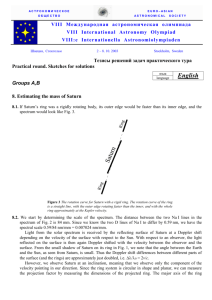


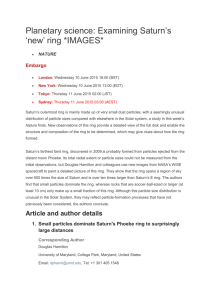
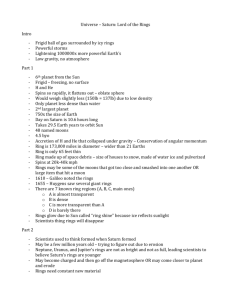
![Read the story [pdf, 15kb]](http://s3.studylib.net/store/data/007120651_2-2865a24f3154f2c5f351d9eea66d52fa-300x300.png)
